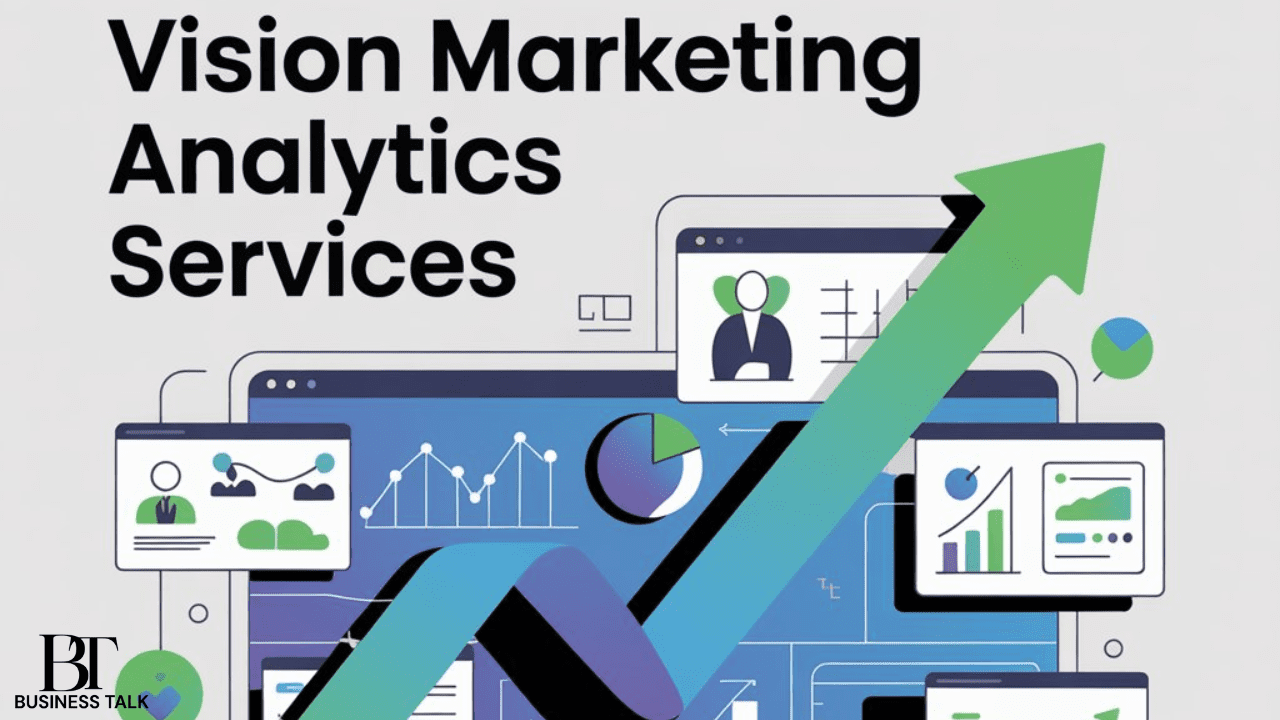In today’s fast-paced digital economy, businesses thrive on data-driven decisions. Vision marketing analytics services have emerged as a transformative force, bridging the gap between raw data and actionable insight. In an age where every click, purchase, and view counts, understanding how to interpret consumer behavior can determine whether a brand leads or lags behind.
These services empower companies to visualize and interpret data in meaningful ways, offering clarity in the chaos of metrics. For organizations across the United States, vision marketing analytics services provide a roadmap to growth, efficiency, and smarter marketing investment. With artificial intelligence (AI), predictive analytics, and visual data storytelling, brands can not only measure success but also anticipate opportunities.
As businesses increasingly compete for attention and trust, the ability to see the bigger picture through analytics becomes a strategic advantage.
Understanding Vision Marketing Analytics Services
Vision marketing analytics services refer to specialized tools and consulting systems designed to help organizations analyze, visualize, and interpret complex marketing data. By integrating data from multiple channels—social media, email campaigns, SEO performance, and e-commerce behavior—these services transform information into accessible, visual reports that guide business decisions.
At their core, they aim to provide clarity through visualization. Instead of overwhelming executives with numbers, they use interactive dashboards, heatmaps, and predictive models to showcase where a marketing strategy succeeds and where it falters.
In today’s digital world, data visualization equals decision power, allowing teams to communicate insights with precision and speed.
How Vision Marketing Analytics Services Work
Every analytical journey begins with data collection. These services gather information from various platforms, including CRM systems, ad networks, and social media insights. The accuracy of this stage determines the effectiveness of future insights.
Next comes data integration and cleansing, where AI-powered algorithms ensure accuracy by removing duplicates and inconsistencies. This creates a unified data environment that reflects the true performance of marketing campaigns.
Finally, visualization and implementation stages transform the numbers into actionable visual stories, enabling teams to optimize strategies and adjust campaigns based on live results.
The Role of Artificial Intelligence in Vision Marketing Analytics Services
Artificial intelligence plays a critical role in enhancing the capabilities of vision marketing analytics services. Machine learning algorithms analyze vast volumes of data in real time, detecting hidden patterns that traditional methods might overlook.
AI models can predict customer behavior, suggest optimized strategies, and provide next-step recommendations for marketing teams. This predictive power enables companies to stay ahead by anticipating market trends.
As Dr. Evelyn Moore, a data science professor at MIT, explains:
“Artificial intelligence in marketing analytics doesn’t replace human creativity—it amplifies it by revealing patterns we couldn’t see before.”
Her insight highlights how AI and human judgment work together to create smarter, faster, and more creative marketing decisions.
Key Benefits of Vision Marketing Analytics Services
Enhanced Decision-Making
Visual reports simplify complex data, allowing executives to act confidently and make faster decisions.
Improved ROI
Businesses can identify which marketing efforts yield the highest return, helping optimize resources effectively.
Better Customer Understanding
By revealing engagement behaviors, analytics help brands design personalized marketing experiences that increase loyalty.
Competitive Advantage
Companies that leverage advanced visualization tools gain faster insights, outperforming those using outdated systems.
Cross-Department Collaboration
Visual analytics make data accessible to all teams, promoting unity and stronger business strategies.
Case Studies of Vision Marketing Analytics Services in Action
A leading U.S. retail brand used vision marketing analytics tools to analyze regional buying patterns. Heatmaps revealed top-performing product categories by location, increasing marketing effectiveness by 30% within three months.
In the healthcare industry, visualization tools tracked patient engagement campaigns, improving ROI by 25%. These cases demonstrate that vision analytics are not confined to one field—they are universally transformative.
Integrating Vision Marketing Analytics Services Into Business Strategy
Vision-based analytics must align with a company’s strategic goals. From long-term forecasting to short-term campaign tracking, integration ensures that every marketing decision is rooted in accurate, up-to-date insights.
By merging analytics with KPIs such as brand awareness, retention, and conversion optimization, companies achieve agility and consistency in performance evaluation.
This integration turns analytics from a reporting tool into a strategic asset.
Overcoming Common Challenges
Adopting vision marketing analytics services comes with challenges. Data quality issues, integration complexity, and resistance to change are common.
To succeed, businesses should establish clear data governance and foster collaboration between marketing and data science teams. Training programs can ensure smooth adoption, building a data-driven company culture for lasting impact.
The Future of Vision Marketing Analytics Services
The future points toward AI-powered automation, immersive data visualization, and real-time decision-making. Upcoming trends include:
- Augmented reality dashboards for immersive insights
- Voice-activated AI assistants delivering instant analytics
- Predictive visual forecasting for proactive strategy
As analytics tools evolve, they’ll empower every decision-maker—bridging technology and creativity for smarter marketing.
The fusion of human intuition and artificial intelligence will define the next era of analytics.
Expert Insight: Human Connection in Data
Even the most advanced AI cannot replace human perspective. Data reveals “what” happens, but only humans can interpret “why.”
As Dr. Alan Reeves from the University of Chicago says:
“Vision marketing analytics services give us sight, but it’s human judgment that gives us insight.”
His statement reminds us that analytics thrive when data meets empathy and innovation.
Conclusion
The rise of vision marketing analytics services marks a new chapter in business intelligence. By combining AI precision, visual storytelling, and strategic application, organizations gain the clarity to make decisions that truly matter.
In a world overflowing with information, clarity is power. Companies that master visual analytics will shape the future of data-driven marketing and define success in the coming decade.
Ultimately, analytics isn’t about seeing numbers—it’s about seeing differently, turning vision into value.






Pingback: Star Wars Black Series: 7 Powerful Secrets Every German Collector Must Know